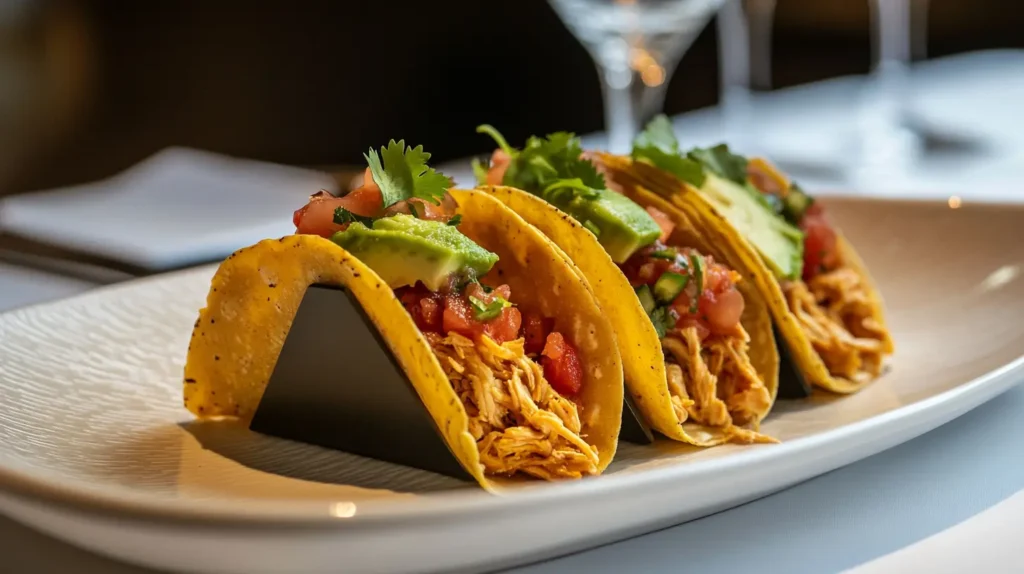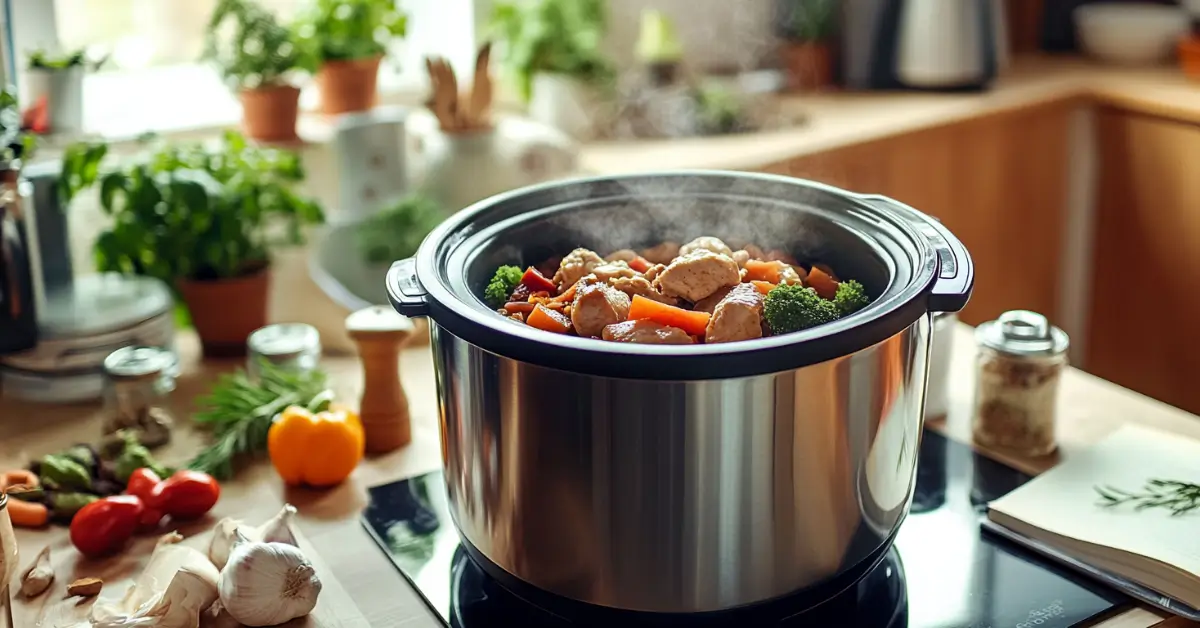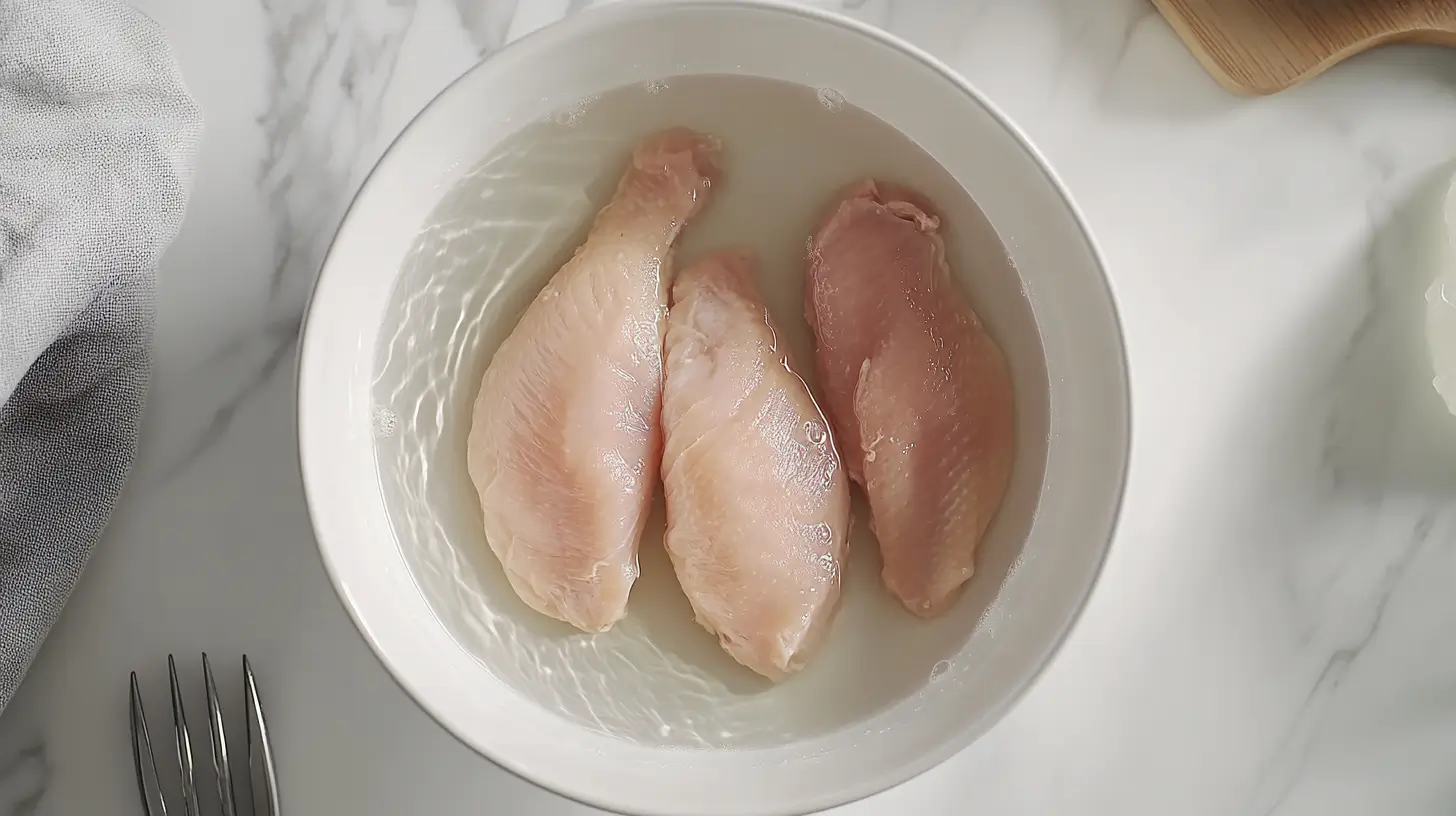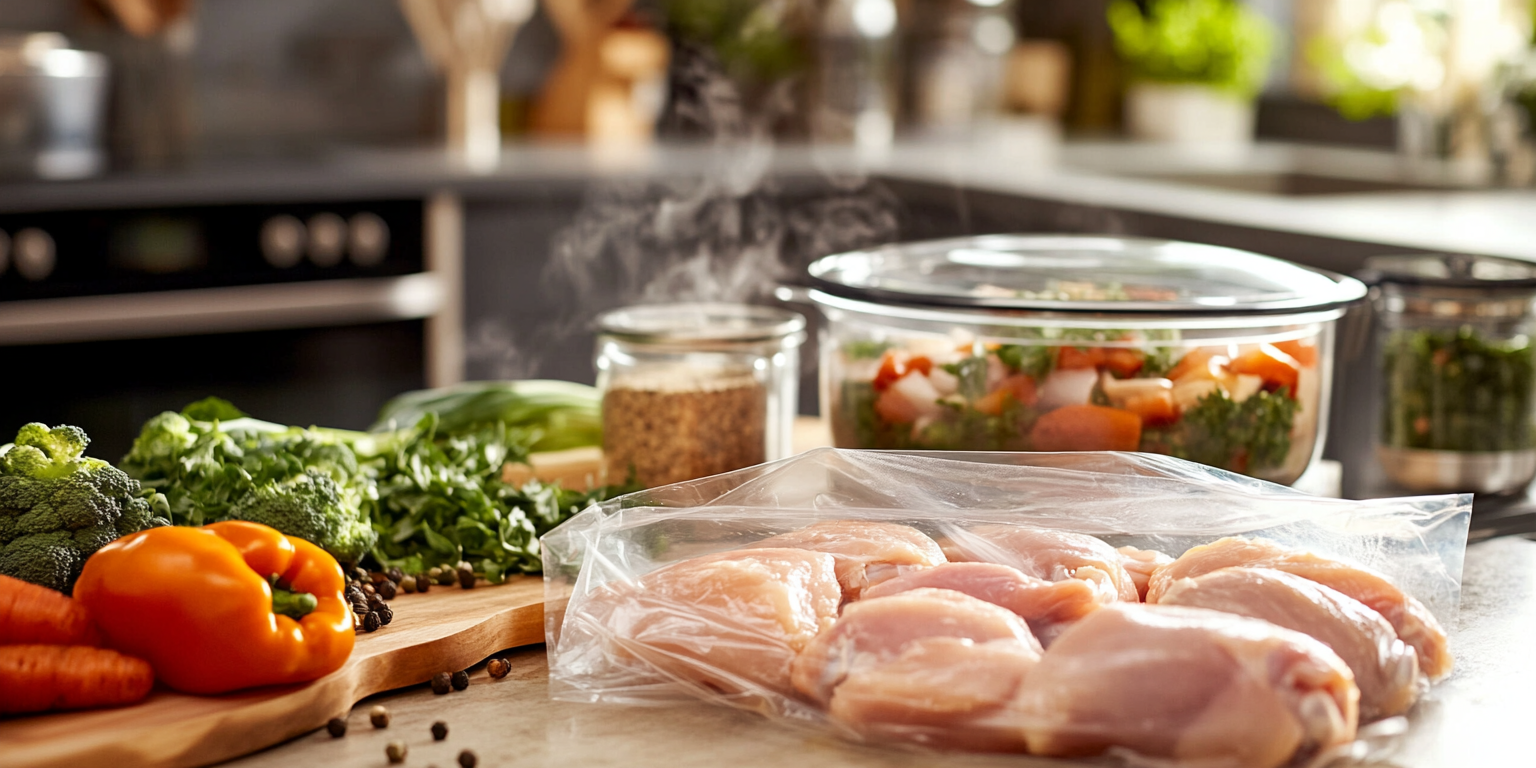What to do with leftover tough chicken is a common question faced by home cooks looking to avoid waste while still enjoying a great meal. Dealing with leftover tough chicken can be challenging, but it also offers a unique opportunity to create delicious, resourceful meals. Whether your chicken dried out during cooking or was refrigerated too long, there are plenty of ways to transform it into dishes that are both flavorful and tender. This guide provides practical and creative solutions to make the most of it without sacrificing taste or quality.
Why Leftover Chicken Turns Tough
Understanding why chicken becomes tough is key to avoiding it in the future and improving it when it does. Toughness typically occurs when chicken is overcooked, as the proteins tighten and lose moisture. Similarly, reheating or improper storage can dry out the meat further. Once the texture changes, what to do with leftover tough chicken becomes a matter of repurposing it creatively. By recognizing these factors, you can not only fix the issue but also prevent it from happening again.
Creative Solutions to Transform Leftover Chicken
Moisture-Rich Cooking Methods
Adding moisture is a simple yet effective way to breathe life back into leftover tough chicken. Cooking methods that incorporate liquid, like steaming, simmering, or braising, can help rehydrate the meat. If you’re unsure what to do with leftover tough chicken, starting with these moisture-rich techniques is a smart first step.
- Steam the Chicken: Place the chicken in a steamer basket with water or broth underneath. Steam for 5–10 minutes to soften it gently.
- Simmer in a Sauce: Slice or shred the chicken and simmer it in a flavorful sauce for 10–15 minutes. Tomato-based sauces, curries, or creamy gravies work wonderfully.
- Slow-Cook with Vegetables: Use a slow cooker to heat the chicken with vegetables and broth for several hours. This enhances flavor while restoring tenderness.
These methods work best when paired with bold seasonings to elevate the taste.
Shredding for Better Texture
Shredding tough chicken is an easy way to improve its texture and make it more versatile. Shredded chicken integrates seamlessly into various dishes, masking any dryness or toughness. Here’s how to do it:
- Use a fork or your hands to break the chicken into small, stringy pieces.
- If the chicken is very dry, reheat it with a splash of broth or olive oil to reintroduce moisture.
- Add shredded chicken to tacos, wraps, or salads for a quick meal.
Shredding not only softens the meat but also increases its absorption of marinades and sauces. It’s one of the most practical answers to what to do with leftover tough chicken when you’re short on time.
Soaking Leftover Tough Chicken in a Flavorful Marinade
Marinades aren’t just for raw chicken—they can work wonders on leftover tough chicken too. By soaking the meat in a marinade, you can infuse it with flavor while softening the texture. Follow these steps:
- Combine ingredients like olive oil, citrus juice, herbs, and spices in a bowl to create a marinade.
- Place the chicken in the marinade, ensuring it’s fully submerged.
- Let it sit in the refrigerator for at least 30 minutes, but ideally overnight.
After marinating, you can reheat the chicken or use it cold in salads and sandwiches.
Soups and Stews
Add Chicken to Hearty Soups
Soups are an excellent way to give new life to leftover tough chicken. The liquid helps soften the meat, while the additional ingredients mask any dryness. If you’re wondering what to do with leftover tough chicken, turning it into a flavorful soup is one of the most effective options. Try these ideas:
- Classic Chicken Noodle Soup: Add shredded chicken to a broth with noodles, carrots, and celery.
- Spicy Tortilla Soup: Use the chicken in a zesty, tomato-based soup garnished with crispy tortilla strips.
- Creamy Corn Chowder: Combine chicken with cream, corn, and potatoes for a rich and satisfying dish.
Soups provide endless customization options, allowing you to match the dish to your preferred flavors.
Make a Comforting Stew with Leftover Tough Chicken
Stews are another fantastic option for leftover tough chicken. Their hearty, slow-cooked nature tenderizes the meat while creating a meal rich in flavor. When deciding what to do with leftover tough chicken, a well-seasoned stew is both easy and rewarding. Here’s how to prepare one:
- Sauté onions, garlic, and vegetables in a large pot.
- Add shredded or chopped chicken, along with your choice of broth, herbs, and spices.
- Let the stew simmer for at least an hour to meld the flavors together.
Serve with crusty bread or over rice for a comforting and complete meal.

Casseroles and Bakes
Layer in a Chicken Casserole
Chicken casseroles are a versatile way to make leftover tough chicken shine. The combination of creamy sauces, cheese, and grains helps balance the texture of the chicken. If you’re exploring what to do with leftover tough chicken, casseroles are an excellent go-to option. Try these ideas:
- Classic Chicken and Rice Casserole: Combine cooked rice, cream of mushroom soup, shredded chicken, and cheese. Bake until bubbly.
- Cheesy Broccoli Casserole: Mix chicken with broccoli, cream sauce, and cheddar for a nutritious, one-pan dish.
Casseroles are perfect for meal prepping or feeding a crowd, making them both practical and delicious.
Create a Creamy Chicken Pot Pie with Leftover Tough Chicken
Transform your leftover tough chicken into a savory chicken pot pie for an indulgent meal. The creamy filling and buttery crust make the chicken’s texture less noticeable. It’s another tasty solution when considering what to do with leftover tough chicken. Here’s a simple approach:
- Combine shredded chicken with a mixture of cream, broth, and sautéed vegetables.
- Pour the filling into a pie crust or a baking dish and top with puff pastry.
- Bake at 375°F (190°C) until golden and bubbling.
This dish is comfort food at its finest, perfect for a cozy evening at home.
Quick Fix Recipes
Chicken Tacos with Leftover Tough Chicken
Tacos are a quick and flavorful way to repurpose leftover tough chicken. If you’re not sure what to do with leftover tough chicken, turning it into tacos is a foolproof, crowd-pleasing solution. By adding bold spices and a touch of moisture, you can create a meal that’s both delicious and satisfying. Follow these steps:
- Shred the Chicken: Use a fork to shred the meat, ensuring smaller pieces absorb more flavor.
- Sauté with Seasonings: Heat the chicken in a pan with oil, taco seasoning, and a splash of chicken broth or lime juice.
- Assemble the Tacos: Fill tortillas with the chicken, then add toppings like guacamole, salsa, shredded cheese, and fresh cilantro.
This versatile dish can be customized with your favorite ingredients, making it a family favorite.
Stir Fry Your Way to Success
A quick stir-fry is an excellent way to revive leftover tough chicken. It’s another great option if you’re thinking about what to do with leftover tough chicken while keeping prep simple. The high-heat cooking method, combined with a flavorful sauce, softens the meat and blends it seamlessly with vegetables. Here’s how to make it:
- Heat oil in a wok or large skillet.
- Add chopped vegetables like bell peppers, broccoli, and snap peas, cooking until tender-crisp.
- Toss in the chicken and stir-fry sauce, such as teriyaki or hoisin.
- Serve over rice or noodles for a complete meal.
This dish comes together in minutes, making it perfect for busy weeknights.

Meal Prep and Makeovers
Transform into Chicken Salad
Chicken salad is a fantastic way to repurpose leftover tough chicken into a fresh and satisfying dish. If you’re unsure what to do with leftover tough chicken, this creamy, customizable option adds moisture and transforms the texture. Follow this recipe:
- Prepare the Base: Shred the chicken into bite-sized pieces.
- Mix the Dressing: Combine mayonnaise or Greek yogurt with Dijon mustard, lemon juice, and a pinch of salt and pepper.
- Add Flavorful Ingredients: Toss in celery, grapes, chopped nuts, or dried cranberries for extra texture and sweetness.
Serve it as a sandwich filling, wrap, or atop a bed of greens for a light and refreshing meal.
Reimagine Leftover Tough Chicken in Protein-Packed Bowls
Bowls are a versatile option for using leftover tough chicken. When considering what to do with leftover tough chicken in a healthy, modern way, grain bowls make a great choice. By layering grains, vegetables, and sauces, you can create a balanced, nutrient-rich meal. Here’s a simple guide:
- Start with a Base: Use quinoa, brown rice, or farro as your foundation.
- Add Vegetables: Include a mix of roasted, raw, or steamed veggies for variety.
- Incorporate Chicken: Shred or chop the chicken and reheat it with your favorite sauce.
- Top It Off: Add avocado, nuts, seeds, or a drizzle of tahini or sriracha for extra flavor.
Bowls are endlessly customizable, allowing you to cater to different tastes and dietary preferences.
Advanced Culinary Tricks
Sous Vide Rescue for Leftover Tough Chicken
If you’re comfortable with advanced cooking techniques and still wondering what to do with leftover tough chicken, sous vide can be a game-changer. This method gently cooks the chicken in a water bath, rehydrating it and enhancing its tenderness. Here’s how to do it:
- Seal the Chicken: Place the chicken in a vacuum-sealed bag or airtight freezer bag.
- Set the Sous Vide Temperature: Heat the water bath to 140°F (60°C).
- Cook for 1–2 Hours: Allow the chicken to reabsorb moisture and regain its softness.
Once finished, the chicken will be perfectly tender and ready to use in your favorite recipes.
FAQs About Cooking Chicken
What is the secret to the juiciest chicken?
The secret to the juiciest chicken lies in a combination of preparation, cooking methods, and timing. Here are the key tips:
- Brining: Soaking chicken in a saltwater solution before cooking helps it retain moisture. Add sugar, herbs, or spices to the brine for additional flavor.
- Using a Meat Thermometer: Cook chicken until the internal temperature reaches 165°F (74°C) for breasts and 175°F (79°C) for thighs. Overcooking dries out the meat.
- Resting the Chicken: Let the chicken rest for 5–10 minutes after cooking to allow the juices to redistribute throughout the meat.
- Moist Cooking Techniques: Methods like baking with foil, steaming, or simmering in sauces can help lock in moisture.
These techniques ensure your chicken stays tender and flavorful every time.
How do you make chicken soft and tender?
To make chicken soft and tender, focus on these methods:
- Marinating: Use a marinade with acidic components like yogurt, buttermilk, lemon juice, or vinegar to break down proteins and tenderize the meat.
- Slow Cooking: Cooking chicken slowly in a crockpot or braising it in liquid over low heat helps it become tender.
- Pounding: Flattening chicken breasts with a mallet ensures even cooking and prevents dryness.
- Sous Vide Cooking: This advanced method keeps chicken moist and tender by cooking it at a precise, low temperature.
Avoid high-heat, fast-cooking methods like grilling without marinating, as they can make the chicken tough.
How long to marinate chicken?
The ideal marinating time depends on the type of marinade and the cut of chicken:
- For Boneless, Skinless Breasts: Marinate for 30 minutes to 2 hours.
- For Bone-In Pieces: Allow 4–6 hours for better flavor penetration.
- For Whole Chicken: Marinate for at least 8 hours, or up to 24 hours for maximum tenderness.
Avoid over-marinating, especially with acidic marinades, as this can make the chicken mushy. Always refrigerate chicken while marinating to ensure food safety.
Is it better to bake chicken at 350 or 400?
The baking temperature depends on your desired result:
- 350°F (175°C): Baking at this lower temperature is ideal for slow, even cooking. It’s perfect for whole chickens or bone-in cuts, ensuring they cook thoroughly without drying out.
- 400°F (200°C): This higher temperature works well for boneless, skinless cuts, as it helps develop a golden, caramelized exterior while keeping the inside moist.
In general, bake chicken until the internal temperature reaches 165°F (74°C) for safety and optimal texture. Using foil or basting during cooking can help prevent dryness at higher temperatures.
Conclusion
Wrapping Up Deliciously
Knowing what to do with leftover tough chicken can transform a kitchen challenge into an opportunity for creativity. Whether you choose quick tacos, hearty stews, or advanced sous vide techniques, the key is to add moisture, flavor, and care to your cooking. By using these strategies, you can ensure that every bite is both delicious and satisfying. With a little imagination, your leftover tough chicken can become the star ingredient in a variety of memorable meals.
Check out our recipe collections on Pinterest and Facebook. Discover delicious ways to transform leftovers and explore a wide variety of recipes all in one place.





